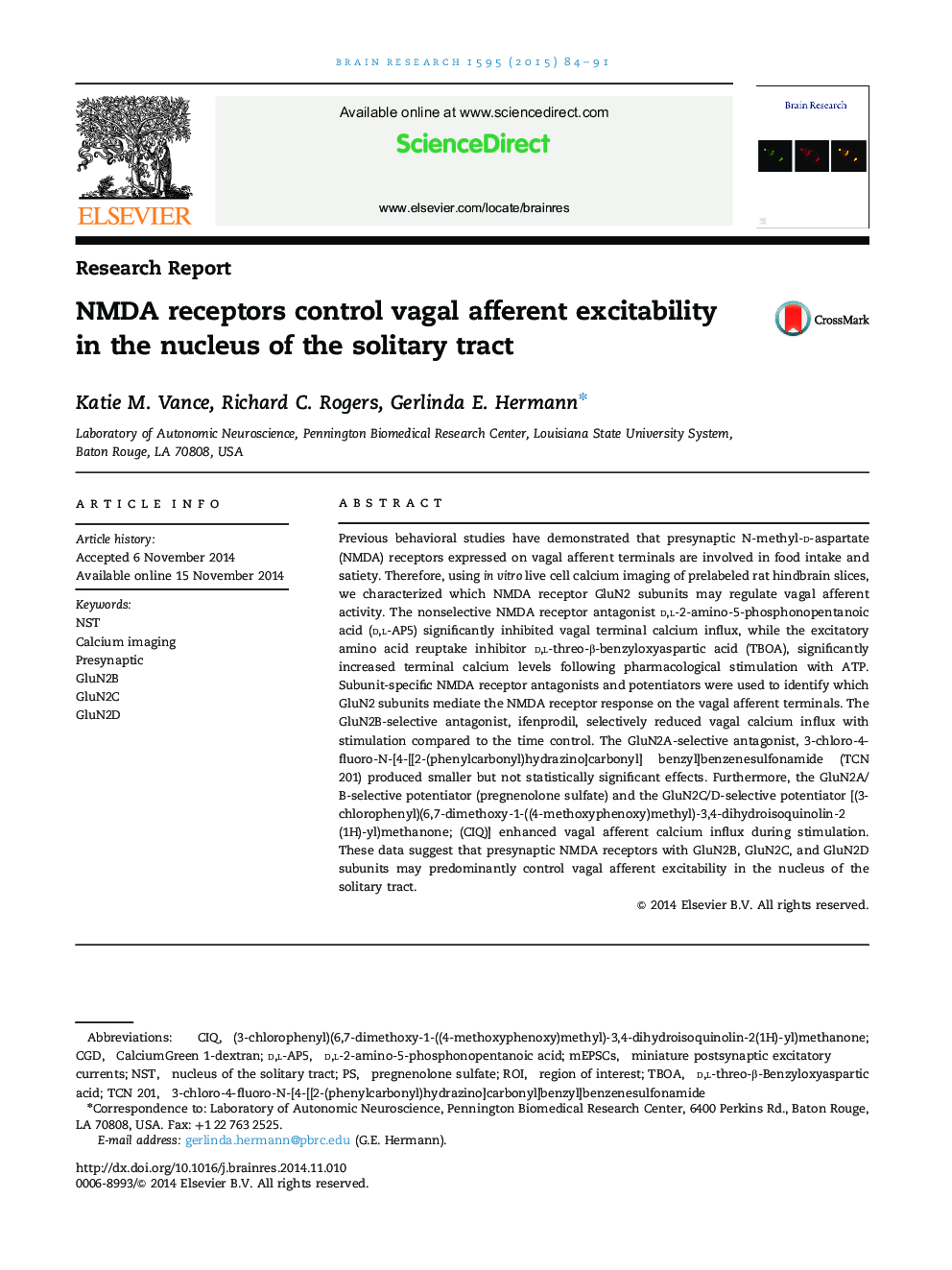| Article ID | Journal | Published Year | Pages | File Type |
|---|---|---|---|---|
| 6263205 | Brain Research | 2015 | 8 Pages |
â¢Presynaptic NMDA receptors on vagal afferents may be involved in food intake.â¢We evaluated which NMDA receptor GluN2 subunits regulate vagal afferent activity.â¢d,l-AP5 and the GluN2B antagonist ifenprodil decrease vagal calcium signals.â¢The GluN2C/D potentiator CIQ enhances vagal calcium levels in prelabeled terminals.â¢GluN2B, GluN2C, and GluN2D NMDARs control vagal afferent excitability in the NST.
Previous behavioral studies have demonstrated that presynaptic N-methyl-d-aspartate (NMDA) receptors expressed on vagal afferent terminals are involved in food intake and satiety. Therefore, using in vitro live cell calcium imaging of prelabeled rat hindbrain slices, we characterized which NMDA receptor GluN2 subunits may regulate vagal afferent activity. The nonselective NMDA receptor antagonist d,l-2-amino-5-phosphonopentanoic acid (d,l-AP5) significantly inhibited vagal terminal calcium influx, while the excitatory amino acid reuptake inhibitor d,l-threo-β-benzyloxyaspartic acid (TBOA), significantly increased terminal calcium levels following pharmacological stimulation with ATP. Subunit-specific NMDA receptor antagonists and potentiators were used to identify which GluN2 subunits mediate the NMDA receptor response on the vagal afferent terminals. The GluN2B-selective antagonist, ifenprodil, selectively reduced vagal calcium influx with stimulation compared to the time control. The GluN2A-selective antagonist, 3-chloro-4-fluoro-N-[4-[[2-(phenylcarbonyl)hydrazino]carbonyl] benzyl]benzenesulfonamide (TCN 201) produced smaller but not statistically significant effects. Furthermore, the GluN2A/B-selective potentiator (pregnenolone sulfate) and the GluN2C/D-selective potentiator [(3-chlorophenyl)(6,7-dimethoxy-1-((4-methoxyphenoxy)methyl)-3,4-dihydroisoquinolin-2(1H)-yl)methanone; (CIQ)] enhanced vagal afferent calcium influx during stimulation. These data suggest that presynaptic NMDA receptors with GluN2B, GluN2C, and GluN2D subunits may predominantly control vagal afferent excitability in the nucleus of the solitary tract.
